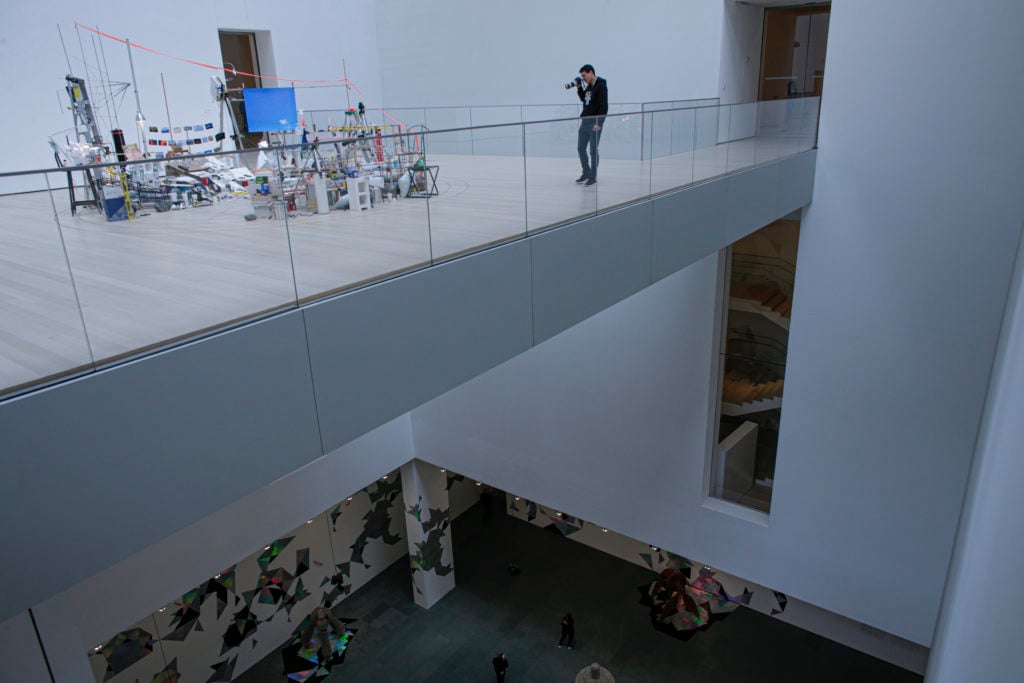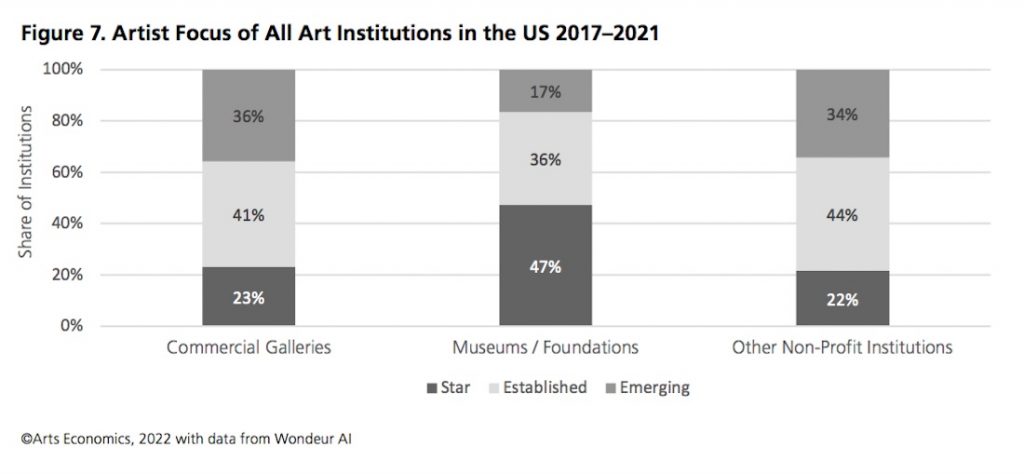Art World
Almost Half of All U.S. Museums Focus Primarily on Just Four Percent of Contemporary Artists, According to a New Study
The museum landscape reflects a sharper winner-take-all dynamic than the gallery system.

The museum landscape reflects a sharper winner-take-all dynamic than the gallery system.

Eileen Kinsella

Just how top-heavy is the institutional art world in the U.S.?
Very top-heavy.
Just four percent of a group of more than a quarter of a million artists—roughly 10,000—were the main focus of 47 percent of institutions in the U.S. between 2017 and 2021, according to a new study.
The report, released last week by UBS and authored by art economist Clare McAndrew, aims to show which U.S. cities are leading art hubs, as well as the roles they play in forging the world’s largest art market. Not surprisingly, New York has the largest share of active art institutions (including both for- and non-profit), comprising 26 percent of the U.S. total. Los Angeles comes in at seven percent and San Francisco takes third place at four percent.
But the data on exactly how the vast number of working artists trickle down into museums across the U.S. is perhaps the most revealing.

Image via “The Role of Cities In The US Art Ecosystems” ©Arts Economics
Using data provided by the research-based technology company Wondeur AI, researchers divided artists into three categories—”star,” “established,” and “emerging”—based on their acquisition and exhibition histories at low-profile, mid-range, and high-profile institutions.
The star artists, the highest tier, make up the top four percent of all artists born after 1900 in Wondeur AI’s database of more than 250,000 names. Established artists represent the next 12 percent. Emerging artists make up the remaining 84 percent of the total.
“Star” artists have the most central positions in the global art network. These positions are calculated based on A.I.-driven analysis of three different networks: artists network; institutions network; and artists-institutions network.
According to the paper, nearly half of all U.S. museums over the past four years had a primary focus on those in the star artist category, while 17 percent concentrated on emerging artists.
For some, this statistic captures long-sensed dynamics in the field, where the ability to get funding through deep-pocketed collectors and supporters and the promise of large audiences often make exhibitions far more feasible to produce. Although much has been made of a shift toward glocal programming at art museums, a 2015 study in the Art Newspaper found that almost one-third of solo museum shows go to artists represented by just five galleries.
“While the findings are jarring, their logic seems plausible,” said cultural strategy expert Andras Szanto. “How many artists actually get to do a museum show? There is a massive and growing pool of artists circulating out there and the vast majority of them will never be included in a museum exhibition.” Going forward, Szanto notes, “We can now have an interesting debate about whether that it a ‘good’ thing or a ‘bad’ thing.”
The report also breaks down how much of each category commercial galleries typically show, via analysis of more than 2,000 US galleries active in the period between 2017-2021.
As it turns out, although the U.S. gallery sector is top-heavy when it comes to sales, their exhibition programs are far more wide-ranging than museums. “The majority of [sales] value [is] coming from a relatively small segment of top artists,” the paper states, but exhibition tallies reveal a much more distributed system.
Twenty-three percent of commercial galleries in the U.S. are focused primarily on star artists, according to the study; 41 percent are focused on established artists; and 36 percent specialize in emerging.
Commercial galleries showed a larger proportion of emerging artists not only than museums, but also other types of arts nonprofits. “This indicates that commercial galleries in the U.S. play a critical role in the careers of artists, with a range of different galleries focused on artists at different career stages,” the paper states. “Unlike most museums, galleries are important from an early stage, and feature in the exhibition programs of artists all the way through their careers.”